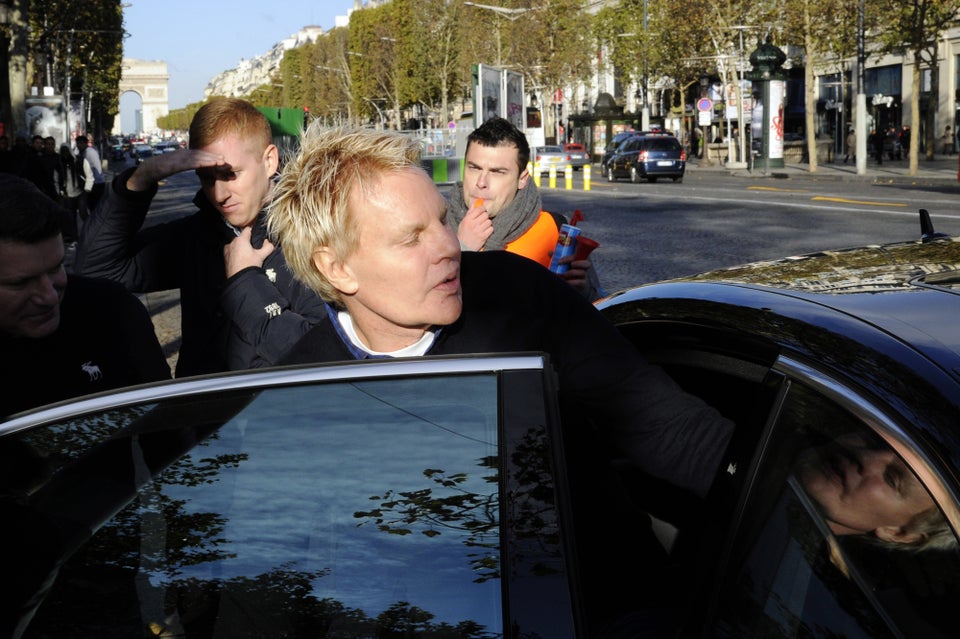
The man who made Abercrombie & Fitch's workforce less dominated by whites and men has quit the company. He will be replaced by a woman.
Todd Corley, chief diversity officer at the teen apparel retailer, is starting the TAPO Institute, an advisory firm that will advocate for "inclusive leadership," Abercrombie announced on Thursday.
A decade ago, more than 90 percent of Abercrombie's store associates were white. The issue received public scrutiny in 2004, when the company settled three class-action lawsuits filed by former employees who accused Abercrombie of race and gender discrimination. Abercrombie paid nearly $50 million to thousands of minority and female plaintiffs and pledged to diversify its workforce.
Chief executive Mike Jeffries tapped Corley, then a senior manager of diversity for Starwood Hotels & Resorts, to head Abercrombie's new Office of Diversity.
Now, more than half of Abercrombie's associates are minorities, according to the company. As for senior executives: More than 40 percent of Abercrombie's vice presidents are women, as are 75 percent of executive vice presidents and 33 percent of the board of directors, according to Abercrombie. These figures are notably higher than at many public companies.
Abercrombie did not provide information about how many of its senior executives are minorities.
"I am proud of the accomplishments we have made together as an organization," Corley said in a statement. "The efforts began around race and ethnicity but evolved to include diversity in the way people think, cultural differences and creating an inclusive place to work."
Amy Zehrer, executive vice president of stores and a 22-year veteran of Abercrombie, will take over the company's diversity program.
While Abercrombie has received praise in some areas for its inclusive environment -- a company press release notes that the Human Rights Campaign has named A&F a Best Place to Work for the LGBT community every year since 2007 -- it has also been dogged by allegations of religious, racial and size discrimination, even after its diversity program was well underway.
The retailer's exacting dress code, for example, has been the subject of much scrutiny. It dictates everything from how Abercrombie retail workers can highlight their hair to the way they should double-cuff their skinny jeans.
Store employees told The Huffington Post in 2013 that enforcement of the style guide ensnared workers who wore religious items such as hijabs and crosses. A pair of lawsuits from Muslim women who were fired or refused employment over their hijabs led to a change in Abercrombie's policies last August, specifically acknowledging that the headscarves must be accommodated in the workplace.
"I felt like I never belonged and was uncomfortable working at Abercrombie," one former employee told HuffPost. "It was pretty ironic how they were recruiting diverse employees, but only if your hair is not covered."
Last year, Abercrombie was skewered for discriminating against people with larger body types, refusing to stock bigger sizes for female customers in accordance with Jeffries' ideal of the "attractive all-American kid." In a 2006 interview with Salon, which resurfaced in May 2013, Jeffries said: "A lot of people don't belong [in our clothes], and they can't belong. Are we exclusionary? Absolutely."
Following the backlash, Abercrombie decided to offer larger sizes for some of its women's clothes in its online store. A new XL size is now available for some women's tops, and some pants and shorts are available in size 14, up from the previous maximum of size 10.
In 2012, models for Abercrombie's sister brand Hollister mocked Asians by squinting their eyes as they posed for photos. Abercrombie fired the employees.
But perhaps Abercrombie's most infamous racial controversy occurred before Corley's tenure.
In 2002, a line of racist T-shirts hit Abercrombie's shelves. Emblazoned with caricatures of Asians with slanted eyes and conical hats, the shirts were quickly recalled after outrage among the Asian-American community. One shirt bore the slogan "Wong Brothers Laundry Service -- Two Wongs Can Make It White." Another displayed an image for "Abercrombie's Pizza Dojo," which promised customers, "You Love Long Time."

